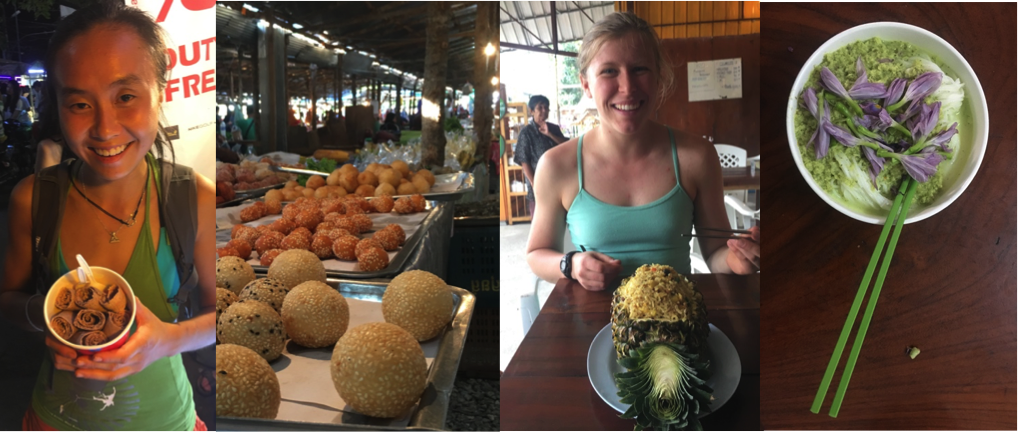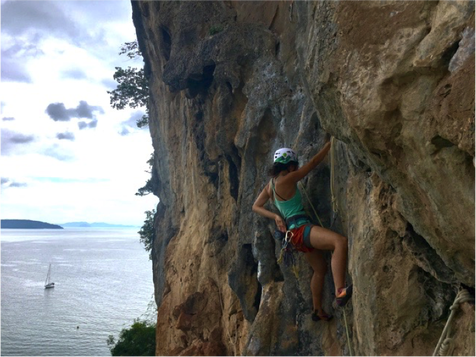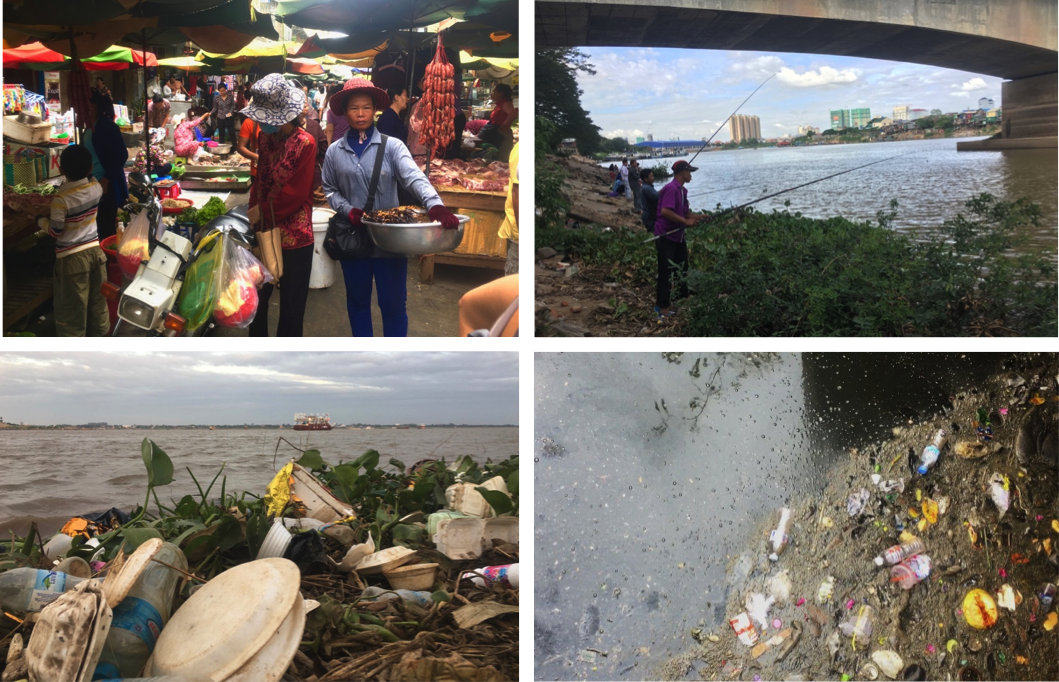By: Emma Bode and Muy Lim
We traveled to Southeast Asia with three goals: climb rocks, eat snacks, and collect freshwater samples for Adventure Scientists’ worldwide microplastics project. We are two gals in our early twenties with overactive metabolisms, a taste for environmental science, and a hunger for adventure. Muy, a dual US and Cambodian citizen, and Emma, an American MSU undergraduate, first became involved in the microplastic issue in Bozeman, MT. We volunteered for the freshwater sampling initiative in the Gallatin watershed and were stoked to carry this project with us on our Christmas vacation to Thailand and Cambodia.
Our adventure began in Tonsai Bay, a popular tourist destination in Southern Thailand surrounded by limestone karst formations perched high above the Andaman Sea. For two weeks, we flip-flopped from crag to crag with backpacks filled with climbing gear and a plethora of exotic fruits purchased at local markets. From our bungalow, there were over 270 routes within a 20-minute walk. We spent cool mornings weaving through stalactites and hot afternoons slurping shakes on the beach. Paradise.
While the geology and food were astounding, we were disturbed by their consumer culture and its effect on the environment. Between spoonfuls of delicious Khao Soi curry in Chiang Mai and irresistible coconut rolls in Phnom Penh, we noticed an exceptional dependence on plastic packaging. Vendors would bag their bags, like a set of Russian dolls. Further, there was no access to safe drinking water on tap and so we retired our Nalgenes for single-use plastic water bottles (our favorite brand was Chang: a company that peddles both bottled water and beer). These bottles, along with our other waste, usually ended up scattered on the beach or left circulating in the ocean. If we were lucky, it fueled blueish-grey burning rubbish heaps.
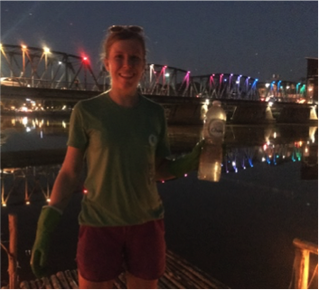 Emma samples the Mae Ping River in Chiang Mai, Thailand after an evening at the night market.
Emma samples the Mae Ping River in Chiang Mai, Thailand after an evening at the night market.
After two weeks by the sea, we eagerly traveled inland and began sampling. All rivers were fair game, as these were the first freshwater samples in the region. We schlepped samples home from six rivers: The Mae Ping, Bassat, Mekong, Tonle Sap, Huay Kuew, and Phnom Kulen. The upland rivers were clear and inviting, but the larger rivers made us cringe with visions of hepatitis. We saw oil, fecal matter, and trash ooze down open canals. Despite the water quality, locals continued to fish the rivers while small children played on the banks fashioning kites from garbage bags and plastic bottles. Collecting water samples exposed us to these otherwise hidden observations.
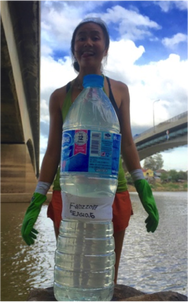 One with the water sample, Muy poses in front of the Bassac River Phnom Penh, Cambodia.
One with the water sample, Muy poses in front of the Bassac River Phnom Penh, Cambodia.
Our conversations with tourists and locals alike raised awareness for microplastics and how they affect the ecosystems we depend on. We informed climbers about microplastics during a Song Tao (Red Truck) ride back to Chiang Mai from Crazy Horse climbing area. We explained the issue to Muy’s family around the dinner table. We conversed with a Cambodian fisherman, who kindly lent us his boat to sample. We believe that while the samples themselves are an important step to resolving this issue, the process of retrieving them has a transformative effect on both the sampler and those around them. The potential for citizen scientists to raise awareness in their local communities is invaluable.
Find out more about our Global Microplastics Initiative and other Adventure Scientists projects by visiting our website and by following us on Facebook, Twitter and Instagram.

